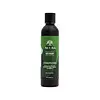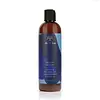What's inside
What's inside
 Key Ingredients
Key Ingredients

 Benefits
Benefits

 Concerns
Concerns

 Ingredients Side-by-side
Ingredients Side-by-side

Water
Skin ConditioningGlycerin
HumectantBetaine
HumectantCetearyl Alcohol
EmollientCetyl Alcohol
EmollientBis-Octyldodecyl Dimer Dilinoleate/Propanediol Copolymer
EmollientLinum Usitatissimum Seed Extract
PerfumingBrassicamidopropyl Dimethylamine
Skin ConditioningRosmarinus Officinalis Leaf Oil
MaskingCaffeine
Skin ConditioningMentha Piperita Oil
MaskingSerenoa Serrulata Fruit Extract
Skin ConditioningCeramide NP
Skin ConditioningCopper Tripeptide-1
Skin ConditioningCopper Tripeptide-34
Skin ConditioningBiotin
AntiseborrhoeicInositol
HumectantPhytosterols
Skin ConditioningMenthol
MaskingMelatonin
AntioxidantLactic Acid
BufferingSarcosine
Skin ConditioningPolyglyceryl-10 Laurate
Skin ConditioningPotassium Olivate
EmulsifyingCaprylhydroxamic Acid
Caprylyl Glycol
EmollientSodium Benzoate
MaskingPotassium Sorbate
PreservativeWater, Glycerin, Betaine, Cetearyl Alcohol, Cetyl Alcohol, Bis-Octyldodecyl Dimer Dilinoleate/Propanediol Copolymer, Linum Usitatissimum Seed Extract, Brassicamidopropyl Dimethylamine, Rosmarinus Officinalis Leaf Oil, Caffeine, Mentha Piperita Oil, Serenoa Serrulata Fruit Extract, Ceramide NP, Copper Tripeptide-1, Copper Tripeptide-34, Biotin, Inositol, Phytosterols, Menthol, Melatonin, Lactic Acid, Sarcosine, Polyglyceryl-10 Laurate, Potassium Olivate, Caprylhydroxamic Acid, Caprylyl Glycol, Sodium Benzoate, Potassium Sorbate
Zinc Pyrithione 1%
AntiseborrhoeicWater
Skin ConditioningAloe Barbadensis Leaf Juice
Skin ConditioningCocos Nucifera Oil
MaskingBetaine
HumectantGlycerin
HumectantCetyl Alcohol
EmollientQuaternium-18
Polyquaternium-37
Olea Europaea Fruit Oil
MaskingMelaleuca Alternifolia Leaf Oil
AntioxidantPhytosterols
Skin ConditioningLinum Usitatissimum Seed Extract
PerfumingCetearyl Alcohol
EmollientParfum
MaskingMentha Piperita Oil
MaskingPiroctone Olamine
PreservativeMenthol
MaskingPropylene Glycol Dicaprylate/Dicaprate
EmollientQuaternium-80
Polyquaternium-10
Propanediol
SolventPropylene Glycol
HumectantCitric Acid
BufferingPPG-1 Trideceth-6
Skin ConditioningPhenoxyethanol
PreservativeCaprylyl Glycol
EmollientSodium Benzoate
MaskingPotassium Sorbate
PreservativeCitronellol
PerfumingGeraniol
PerfumingHexyl Cinnamal
PerfumingLimonene
PerfumingLinalool
PerfumingZinc Pyrithione 1%, Water, Aloe Barbadensis Leaf Juice, Cocos Nucifera Oil, Betaine, Glycerin, Cetyl Alcohol, Quaternium-18, Polyquaternium-37, Olea Europaea Fruit Oil, Melaleuca Alternifolia Leaf Oil, Phytosterols, Linum Usitatissimum Seed Extract, Cetearyl Alcohol, Parfum, Mentha Piperita Oil, Piroctone Olamine, Menthol, Propylene Glycol Dicaprylate/Dicaprate, Quaternium-80, Polyquaternium-10, Propanediol, Propylene Glycol, Citric Acid, PPG-1 Trideceth-6, Phenoxyethanol, Caprylyl Glycol, Sodium Benzoate, Potassium Sorbate, Citronellol, Geraniol, Hexyl Cinnamal, Limonene, Linalool
Ingredients Explained
These ingredients are found in both products.
Ingredients higher up in an ingredient list are typically present in a larger amount.
Betaine is a common humectant (a substance that promotes retention of moisture). It's known to be gentle on the skin and can help balance hydration.
This ingredient is best for improving hydration and soothing irritated skin. Studies also show it helps even out skin tone.
Fun fact: Betaine is naturally created in the skin and body. The kind found within cosmetic products can be either plant-derived or synthetic.
Another name for betaine is trimethylglycine.
Learn more about BetaineCaprylyl Glycol is a humectant and emollient, meaning it attracts and preserves moisture.
It is a common ingredient in many products, especially those designed to hydrate skin. The primary benefits are retaining moisture, skin softening, and promoting a healthy skin barrier.
Though Caprylyl Glycol is an alcohol derived from fatty acids, it is not the kind that can dry out skin.
This ingredient is also used as a preservative to extend the life of products. It has slight antimicrobial properties.
Learn more about Caprylyl GlycolCetearyl alcohol is a mixture of two fatty alcohols: cetyl alcohol and stearyl alcohol. It is mainly used as an emulsifier. Emulsifiers help prevent the separation of oils and products. Due to its composition, it can also be used to thicken a product or help create foam.
Cetearyl alcohol is an emollient. Emollients help soothe and hydrate the skin by trapping moisture.
Studies show Cetearyl alcohol is non-toxic and non-irritating. The FDA allows products labeled "alcohol-free" to have fatty alcohols.
This ingredient is usually derived from plant oils such as palm, vegetable, or coconut oils. There is debate on whether this ingredient will cause acne.
Due to the fatty acid base, this ingredient may not be Malassezia folliculitis safe.
Learn more about Cetearyl AlcoholCetyl Alcohol is a fatty alcohol. Fatty Alcohols are most often used as an emollient or to thicken a product.
Its main roles are:
Though it has "alcohol" in the name, it is not related to denatured alcohol or ethyl alcohol.
The FDA allows products labeled "alcohol-free" to have fatty alcohols.
Learn more about Cetyl AlcoholGlycerin is already naturally found in your skin. It helps moisturize and protect your skin.
A study from 2016 found glycerin to be more effective as a humectant than AHAs and hyaluronic acid.
As a humectant, it helps the skin stay hydrated by pulling moisture to your skin. The low molecular weight of glycerin allows it to pull moisture into the deeper layers of your skin.
Hydrated skin improves your skin barrier; Your skin barrier helps protect against irritants and bacteria.
Glycerin has also been found to have antimicrobial and antiviral properties. Due to these properties, glycerin is often used in wound and burn treatments.
In cosmetics, glycerin is usually derived from plants such as soybean or palm. However, it can also be sourced from animals, such as tallow or animal fat.
This ingredient is organic, colorless, odorless, and non-toxic.
Glycerin is the name for this ingredient in American English. British English uses Glycerol/Glycerine.
Learn more about GlycerinLinum Usitatissimum Seed Extract is a fragrance.
Mentha Piperita Oil is the volatile oil obtained from the whole plant of the Peppermint plant.
It can be used to add a fresh scent to products.
Peppermint oil may cause skin sensitivity and redness due to its menthol content. Menthol also has a cooling effect (like your toothpaste).
Learn more about Mentha Piperita OilMenthol is a compound found in mint plants, such as peppermint. In its pure form, it is a clear crystalline substance.
Menthol is known for its cooling sensation; however, the cooling is actually from your skin being sensitized. Menthol can worsen rosacea. We recommend speaking with a professional if you have concerns.
Menthol also has antimicrobial properties.
Learn more about MentholPhytosterols come from plants, nuts, and whole grains. These compounds have skin soothing and moisturizing properties.
Fun fact: They are similar to cholesterol and can help lower cholesterol levels.
Potassium Sorbate is a preservative used to prevent yeast and mold in products. It is commonly found in both cosmetic and food products.
This ingredient comes from potassium salt derived from sorbic acid. Sorbic acid is a natural antibiotic and effective against fungus.
Both potassium sorbate and sorbic acid can be found in baked goods, cheeses, dried meats, dried fruit, ice cream, pickles, wine, yogurt, and more.
You'll often find this ingredient used with other preservatives.
Learn more about Potassium SorbateSodium Benzoate is a preservative. It's used in both cosmetic and food products to inhibit the growth of mold and bacteria. It is typically produced synthetically.
Both the US FDA and EU Health Committee have approved the use of sodium benzoate. In the US, levels of 0.1% (of the total product) are allowed.
Sodium benzoate works as a preservative by inhibiting the growth of bacteria inside of cells. It prevents the cell from fermenting a type of sugar using an enzyme called phosphofructokinase.
It is the salt of benzoic acid. Foods containing sodium benzoate include soda, salad dressings, condiments, fruit juices, wines, and snack foods.
Studies for using ascorbic acid and sodium benzoate in cosmetics are lacking, especially in skincare routines with multiple steps.
We always recommend speaking with a professional, such as a dermatologist, if you have any concerns.
Learn more about Sodium BenzoateWater. It's the most common cosmetic ingredient of all. You'll usually see it at the top of ingredient lists, meaning that it makes up the largest part of the product.
So why is it so popular? Water most often acts as a solvent - this means that it helps dissolve other ingredients into the formulation.
You'll also recognize water as that liquid we all need to stay alive. If you see this, drink a glass of water. Stay hydrated!
Learn more about Water